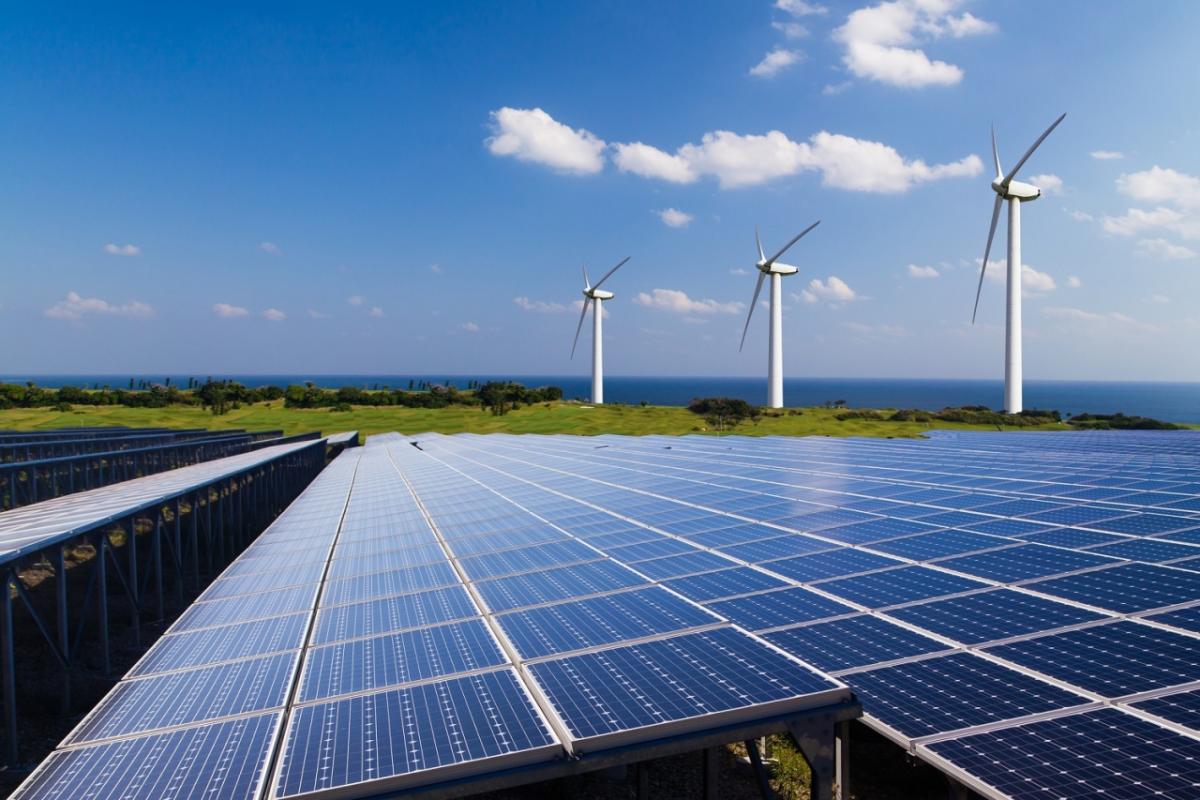Decarbonization Series Part 2: How to Implement Renewable Energy in Your Organization

Decarbonization Series Part 2: How to Implement Renewable Energy in Your Organi…
In the first post of this series, we wrote about energy audits and how a business can use improvements identified in these audits to reduce costs and cut emissions. Once such improvements have been introduced, a business may feel that there is no way to further reduce its carbon footprint – but additional opportunities exist. One of the most impactful ways for a business to reduce its carbon footprint for the energy it uses is to purchase renewable energy, either from on-site generation or from the existing utility provider. There are many possible solutions we will outline below and their applicability to different situations.
What are Renewable Energy Sources?
Renewable energy sources are sources of energy which are replenished quickly. Some common examples include solar, wave, geothermal, and wind. Renewable sources often reduce an organization’s carbon footprint, but they can have other advantages too – they can be installed on a small scale for off-grid locations, their installation can be subsidized with appropriate tax credits, the sources can be used to shift loading on an electric grid in times of high demand, and their costs are less dependent on traditional oil-and-gas based supply chains. Businesses can use these sources to decarbonize by purchasing from existing providers or installing their own energy infrastructure.
Using Existing Energy Providers
One way that a business can use renewable energy to decarbonize is to purchase from an existing energy provider. How this works varies by different markets, but the general guidelines are similar everywhere. The first way that utilities sell renewable energy is through so-called “green pricing”. With green pricing, utilities will generate power from renewable sources and then pass the appropriate costs on to the end-user. The actual price of renewable energy is set in each market, and in some cases, utility providers do not charge an additional premium because renewable sources are cheaper than traditional ones. Utilities will also compete with other energy providers and partner with clean power generators that sell electricity on a wholesale market. In these situations, utility customers can select from a number of different energy providers and can select those that provide clean energy. Finally, in geographies where utilities are not generating energy from renewable sources, a business may be able to purchase “green certificates” which help fund renewable energy generation elsewhere.
Implementing Your Own Renewable Energy Source
Another way that a business can use renewable energy to decarbonize is to invest in their own renewable energy infrastructure. Such a strategy can be used to replace part or all the energy that the business purchases from more traditional, nonrenewable sources. The scope and scale of such an investment can vary from a few simple solar panels on a roof to a full-scale generation plant, and the optimal strategy will depend on the specific circumstances of the business. A renewable energy specialist can review your business's energy consumption and the options available in your local area, and they can advise on the costs and benefits of different types of solutions.
In summary, switching a business to renewable energy is an excellent way to further decarbonize. A business can purchase renewable energy from their local utility provider, either by purchasing directly from the provider, by selecting an alternative provider that partners with clean energy suppliers, or by purchasing renewable energy credits that offset generation elsewhere. A business can also invest in their own renewable energy infrastructure to generate renewable energy at their own facilities. Energy specialists can help a business understand its different options and prepare and implement an optimal strategy moving forward.
The first part of this three-part series talked about energy audits, and the final post in this series will discuss how you can buy carbon offsets to reduce or eliminate your carbon footprint. The post also weighs the limitations of such offsets and some considerations when implementing them in an organization.
Inogen Alliance is a global network made up of dozens of independent local businesses and over 5,000 consultants around the world who can help make your project a success. Our Associates collaborate closely to serve multinational corporations, government agencies, and nonprofit organizations, and we share knowledge and industry experience to provide the highest quality service to our clients. If you want to learn more about how you can work with Inogen Alliance, you can explore our Associates on this webpage or Contact Us. Watch for more News & Blog updates here and follow us on LinkedIn.
About Inogen Alliance
We are an Alliance of consultants that can provide global coverage through one point of contact for environmental, health, safety, and sustainability efforts at your company. Together by choice for 20 years, our Alliance has unparalleled global coverage and a committed team that will partner with you in solving your EHS challenges, resolving liabilities from the past, addressing today's requirements and delivering innovative solutions for the future. Learn more at https://www.inogenalliance.com.

